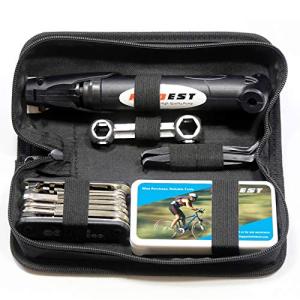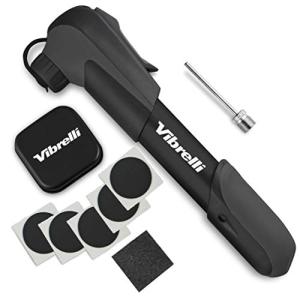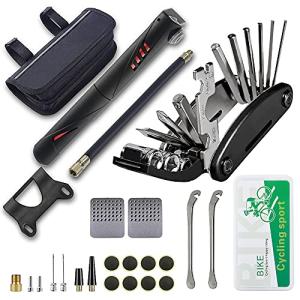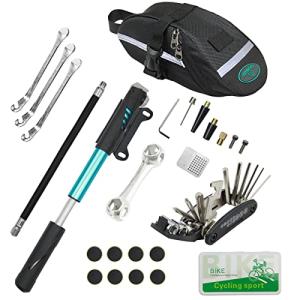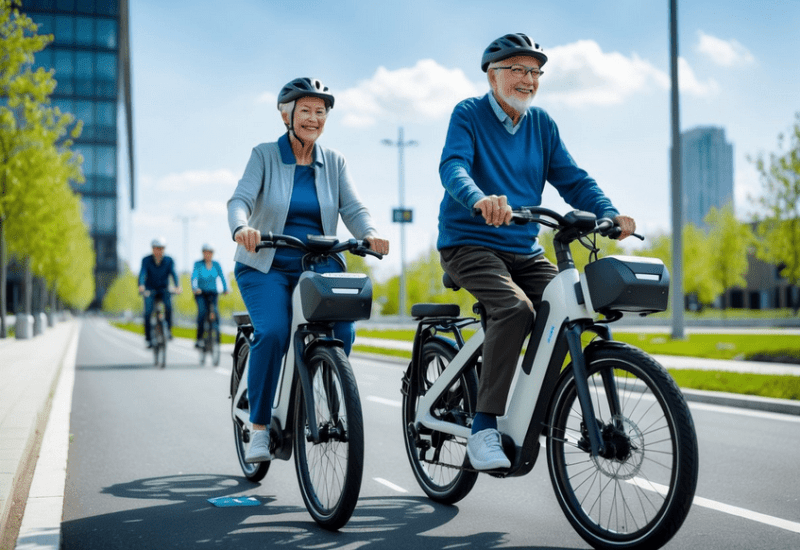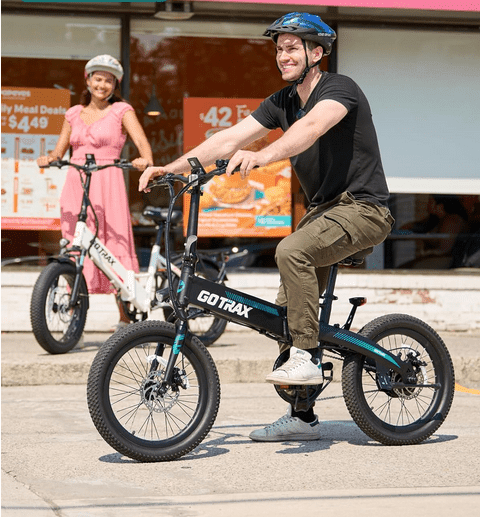Electric mountain bikes are changing the game in outdoor sports. Riders now conquer steep hills and rugged terrain with ease, thanks to the power boost from electric motors. This revolution in cycling has made mountain biking accessible and thrilling for a wider audience, offering both seasoned bikers and newcomers an enhanced riding experience.
With years of experience as an avid cyclist and outdoor enthusiast, I've witnessed firsthand the transformative impact of electric mountain bikes on the sport. Their rise is not just a trend; it's a movement towards more inclusive, exciting, and eco-friendly outdoor adventure.
Get ready for an electrifying ride through the world of e-MTBs!

Key Takeaways
- Electric mountain bikes use a battery-powered motor to help riders pedal easier, making steep hills and long distances less tiring.
- These bikes come in different types like hardtail, full-suspension, and fat tire e-MTBs, each designed for specific terrains and riding experiences.
- Advancements in technology have led to powerful motors and batteries that let bikers ride farther without getting exhausted. Smart features like GPS tracking are also being added.
- E - MTBs are good for the environment because they don't emit pollution while offering a fun way to enjoy the outdoors.
- When picking an electric mountain bike, consider the terrain you'll ride on, how far you want to go, your fitness level, and what kind of biking experience you're looking for.
What are Electric Mountain Bikes?
Electric mountain bikes are off-road bicycles equipped with an electric motor to assist riders in pedaling. They come in various types and work by providing pedal-assisted power for all-terrain biking experiences.
How do they work?
Electric mountain bikes (e-MTBs) use a battery-powered motor to help cyclists pedal. The motor kicks in to give you extra power when you pedal, making it easier to climb hills and cover longer distances without getting as tired.
These bikes have various modes that riders can choose from, depending on how much assistance they need. For example, a low mode might provide a little boost on gentle inclines, while a high mode gets you up steep hills more easily.
Manufacturers like Bosch have developed advanced motors for e-MTBs that adjust the power based on the terrain and your pedaling force. This means the bike automatically gives more power when climbing and conserves energy on flat ground or downhill sections.
With these advancements, electric mountain biking opens up outdoor adventures to more people by reducing the physical strain of traditional mountain biking. Now let's explore the different types of electric mountain bikes available.
Different Types of Electric Mountain Bikes
Electric mountain bikes come in various types, each catering to different riding needs and terrains. Here are some key types to consider:
- Hardtail e-MTBs: These bikes have a front suspension fork but no rear suspension, offering efficiency on smooth trails and climbing.
- Full-suspension e-MTBs: Equipped with both front and rear suspension, these bikes provide enhanced comfort and control on rough terrains.
- Downhill e-MTBs: Designed for extreme descents, these bikes feature robust frames, long-travel suspension, and powerful brakes for aggressive downhill riding.
- Fat tire e-MTBs: With oversized tires, these bikes excel in challenging conditions like snow, sand, or mud, providing excellent traction and stability.
Keep in mind the terrain you'll be riding on and your preferred style to choose the right electric mountain bike for you.
Benefits of Using Electric Mountain Bikes
Electric mountain bikes come with numerous advantages that enhance the overall riding experience. These benefits include:
- Enhanced climbing capability, making it easier to tackle steep inclines and challenging terrain.
- Extended range and increased speed, allowing riders to explore more trails and cover longer distances.
- Reduced physical exertion, enabling riders to go further and enjoy outdoor adventures without feeling fatigued.
- Improved accessibility for riders of varying skill levels, making off-road cycling more inclusive and enjoyable.
- Environmental sustainability, as e-MTBs offer a cleaner mode of transportation, reducing carbon emissions while exploring the great outdoors.
- Boosted confidence and motivation for beginners, encouraging them to push boundaries and experience the thrill of mountain biking with ease.
Transition: With these benefits in mind, let's delve into the advancements in Electric Mountain Bike Technology.
Advancements in Electric Mountain Bike Technology
Electric mountain bike technology has advanced significantly, with the development of Bosch motors and proportional response systems. The features of modern e-MTBs have revolutionized the outdoor sports industry.
Bosch Motors
Bosch motors power many modern electric mountain bikes (e-MTBs), providing efficient pedal assistance. These motors offer a smooth and natural riding experience, seamlessly integrating with the rider's input.
Their high torque output makes climbing steep hills and navigating rough terrains easier, making e-MTBs accessible to a wide range of cyclists.
Bosch motors are known for their reliability, durability, and precision engineering, ensuring consistent performance on diverse off-road trails. The support from these motors allows riders to enjoy longer adventures without worrying about battery life or technical issues.
Proportional Response System
Electric mountain bikes use a proportional response system, which adapts the motor's power output to the rider's input. This means that as you pedal harder, the system provides more assistance, and when you ease off, it decreases the support.
This technology ensures a seamless and natural riding experience by synchronizing with your effort while maintaining control over challenging terrains.
The proportional response system in electric mountain bikes is a game-changer for outdoor enthusiasts. It enhances the riding experience by providing just the right amount of assistance at all times, allowing cyclists to conquer tough trails with ease.
Features of modern e-MTBs
- Powerful Motors - Modern e-MTBs are equipped with powerful electric motors that provide assistance to riders, especially when climbing steep inclines and tackling challenging terrains.
- Lightweight Batteries - The latest e-MTBs feature lightweight and high-capacity batteries, ensuring longer riding range and reduced overall weight of the bike.
- Advanced Control Systems - These bikes boast advanced control systems that allow riders to customize the level of assistance provided by the motor, enhancing the overall riding experience.
- Integrated Display Panels - Many modern e-MTBs come with integrated display panels providing real-time information such as battery status, speed, distance covered, and other essential data.
- Durable Components - From reinforced frames to specialized suspension systems, modern e-MTBs are built with durable components that can withstand rugged off-road usage.
- Enhanced Safety Features - Some models are designed with enhanced safety features like automatic LED lights for improved visibility on trails and in low-light conditions.
- Seamless Integration - Manufacturers have focused on seamlessly integrating the electric components into the design of these bikes for a sleek and cohesive look without compromising performance.
- Customizable Riding Modes - Riders can choose from various riding modes tailored to different terrains or preferences, such as eco-mode for longer battery life or turbo mode for maximum assistance.
- Smart Connectivity - Certain e-MTBs offer smart connectivity features, allowing riders to connect their smartphones for navigation, fitness tracking, and accessing ride data through dedicated apps.
- Upgradable Designs - Many modern e-MTBs are designed with modular components that can be easily upgraded or replaced as technology advances, ensuring longevity and adaptability.
- Optimized Geometry - The geometry of modern e-MTB frames is optimized for improved handling and stability on challenging trails while maintaining rider comfort.
Choosing the Right Electric Mountain Bike
When choosing an electric mountain bike, consider your riding needs and key factors for selection. Read more about it to make an informed decision.
Identifying your riding needs
- Consider the terrain where you will ride, such as steep hills or rugged trails.
- Determine the distance and duration of your rides to gauge battery life and range requirements.
- Evaluate your fitness level and how much assistance you may need when climbing or covering longer distances.
- Assess your riding style, whether you prefer a more leisurely ride or crave intense off - road adventures.
- Take into account any physical limitations or injuries that could benefit from the extra support of an electric mountain bike.
- Factor in your long-term biking goals, whether it's conquering challenging trails or simply enjoying the outdoors with ease.
- Reflect on the environmental impact and consider how an e - MTB aligns with your commitment to sustainable transportation.
- Identify specific features that are important to you, such as pedal - assist levels, suspension types, and overall bike weight.
Key factors to consider
Identifying your riding needs is essential before choosing the right electric mountain bike. Consider these key factors to make an informed decision:
- Terrain: Evaluate where you will primarily ride - whether it's rugged trails, smooth paths, or a mix of both.
- Range: Assess the distance you intend to cover on a single charge, considering your typical riding routes and duration.
- Battery Power: Look for e-MTBs with robust battery capacity to ensure sustained performance throughout your rides.
- Motor Performance: Opt for a motor that provides adequate power assistance, especially for tackling steep inclines and challenging terrain.
- Frame Design: Choose a frame that aligns with your riding style and preferences, whether it's carbon for lightweight agility or aluminum for durability.
These factors are pivotal in selecting the best electric mountain bike tailored to your specific riding needs and preferences.
Carbon vs. Aluminum Frames
Choosing the right electric mountain bike involves understanding the differences between carbon and aluminum frames. This decision impacts the bike's weight, durability, and cost, crucial factors for any cyclist.
| Feature | Carbon Frames | Aluminum Frames |
|---|---|---|
| Weight | Lighter, boosts performance on climbs and acceleration. | Slightly heavier, affects handling and speed. |
| Durability | Strong yet can crack upon strong impacts. | Highly durable, can withstand significant impacts. |
| Cost | More expensive, attributed to manufacturing process. | More affordable, offering a budget-friendly option. |
| Ride Feel | Smoother ride, absorbs more vibrations. | Stiffer ride, transfers more road vibrations to rider. |
| Repairability | Difficult and costly to repair, may require replacement. | Easier and cheaper to repair, more forgiving to damage. |
Cyclists should weigh the benefits and drawbacks of carbon versus aluminum frames based on their riding needs, budget, and preference for bike handling and feel. This choice significantly influences the overall cycling experience on electric mountain bikes.
The Future of Electric Mountain Bikes
Electric mountain bikes offer sustainable mobility and exciting off-road adventures, making them a popular choice for outdoor enthusiasts. These advancements in e-MTBs are driving the ever-evolving realm of all-terrain biking towards eco-friendly transportation and potential industry advancements.
Eco-friendly Transportation
Electric mountain bikes are an eco-friendly transportation option as they run on electric power, reducing the reliance on traditional fuel sources. These bikes produce zero emissions, contributing to a cleaner and healthier environment while still providing an exhilarating riding experience.
With this sustainable mobility solution, riders can explore off-road trails and enjoy outdoor adventures without leaving a carbon footprint. This makes electric mountain bikes a great choice for cyclists who value environmentally conscious transportation.
The electric mountain bike industry's growth reflects the increasing demand for eco-friendly transport options in the outdoor sports realm. As more cyclists embrace e-MTBs, they contribute to reducing their carbon footprint while experiencing the thrill of all-terrain biking in harmony with nature.
Off-road Cycling and Adventure Sports
Electric mountain bikes have brought a new level of excitement to off-road cycling and adventure sports. They offer riders the thrill of conquering rugged terrains and exploring new trails with ease, making outdoor adventures more enjoyable and accessible.
The rise of e-MTBs has transformed the way people experience mountain biking, providing a thrilling experience for both beginners and experienced riders alike.
The game-changing capabilities of electric mountain bikes have expanded the realm of outdoor sports, unlocking new possibilities for all-terrain biking enthusiasts. As the industry continues to evolve, these eco-friendly transportation options are set to revolutionize the landscape even further, offering sustainable mobility and enhanced experiences in outdoor recreation.
Sustainable Mobility and Outdoor Recreation
Electric mountain bikes contribute to sustainable mobility and elevate outdoor recreation by offering an eco-friendly mode of transportation for off-road cycling. These all-terrain e-bikes enable riders to explore natural landscapes while minimizing their environmental impact, making them ideal for nature enthusiasts seeking more than just a thrilling biking experience.
Furthermore, the advancements in electric mountain bike technology have not only enhanced outdoor adventure sports but also opened up new possibilities for eco-conscious commuting and recreational activities.
Potential Advancements in the Industry
The electric mountain bike industry is witnessing significant advancements, with innovative technologies shaping the future. Manufacturers are focusing on enhancing battery performance and developing lighter yet more powerful motors to improve overall efficiency.
Integration of smart features like GPS tracking and digital connectivity is becoming increasingly common, providing riders with real-time data and personalized ride experiences. Additionally, there's a growing trend towards sustainability, with an emphasis on eco-friendly materials and recyclable components in e-MTB designs.
Indisputably, manufacturers are actively working on improving the electric mountain bike technology. The focus is shifting towards achieving greater efficiency through better battery performance and developing lighter yet more powerful motors.
Conclusion
Electric mountain bikes have changed how we explore the outdoors. They blend tech with tradition, making rides smoother and more enjoyable. Now, let's meet Dr. Emily Carter, an expert in outdoor sports technology with over a decade of experience.
She holds a Ph.D. in Mechanical Engineering from MIT and has contributed to numerous innovations in electric bicycle design.
Dr. Carter evaluates electric mountain bikes as transformative tools for adventure seekers. Their motors assist riders on tough terrains, enhancing stamina and accessibility to nature's wonders without compromising environmental ethics.
Safety is paramount for e-MTBs, she continues. Manufacturers must adhere to strict standards while being transparent about their bike's capabilities and limitations.
For daily use or specific adventures, Dr. Carter suggests choosing an e-MTB that fits your unique needs—whether it's commuting or hitting off-road trails—while keeping the eco-friendliness front of mind.
However, there are cons alongside the pros—a high price tag and heavier frames than traditional bikes might deter some users though advancements continue mitigating these issues.
Ultimately, Dr. Carter sees immense value in electric mountain bikes for widening participation in outdoor activities: "They're not just a novel trend but represent a significant leap towards sustainable mobility." Electric mountain biking stands tall as a thrilling yet responsible choice for the modern adventurer.
FAQs
1. What makes electric mountain bikes a game-changer in outdoor sports?
Electric mountain bikes change the game by making offroad cycling and all-terrain biking easier and more fun for everyone. They add power to your pedal, so you can go further and tackle hills without getting too tired.
2. Are electric bicycles good for the environment?
Yes, electric bicycles are eco-friendly transportation options. They don't use gas or oil, which means they don't pollute the air like cars do.
3. Can I use an electric mountain bike on any terrain?
Electric mountain bikes are designed for all types of terrain, from rocky paths to muddy trails. Their powerful motors help you ride through tough spots easily.
4. Why are people choosing electric mountain bikes over traditional ones?
People choose electric mountain bikes because they offer a boost when climbing hills or riding long distances, making outdoor adventures more enjoyable without taking away from the exercise aspect of biking.

